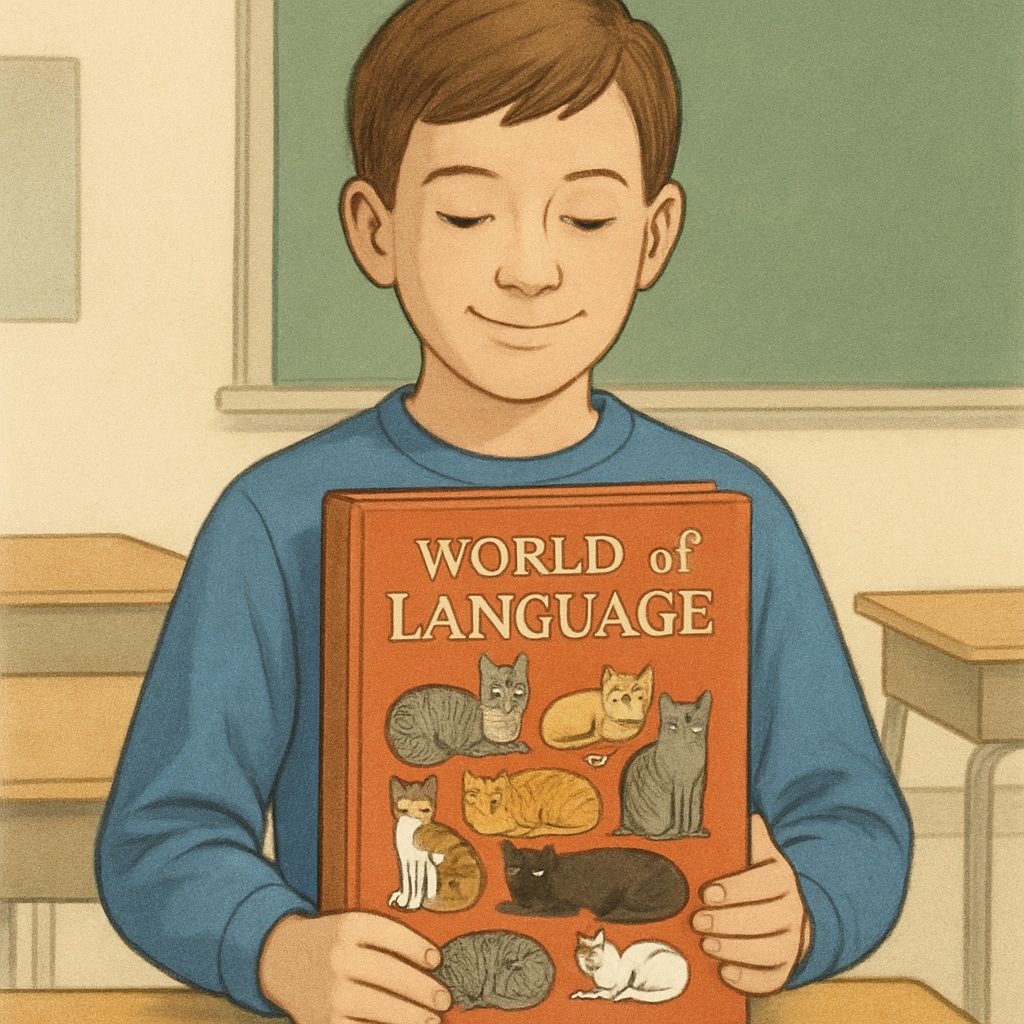For many students who grew up in the era of structured elementary education, the “World of Language” textbook holds a special place in their hearts. Its distinctive cover, often adorned with a curious feline, became a symbol of learning and exploration during formative years. Beyond its memorable appearance, the textbook provided a unique approach to language teaching that balanced scientific reading methods with natural conversation skills. This article revisits the value of “World of Language” and reflects on its influence on modern approaches to language education.
A Unique Approach to Language Instruction
The “World of Language” textbook stood out for its innovative teaching techniques. Unlike other language textbooks that prioritized rote memorization of grammar rules, this series emphasized understanding language as a living, dynamic tool for communication. Lessons were carefully structured to include engaging stories, practical exercises, and interactive activities that encouraged students to think critically about how language works in real-world contexts.
For example, its early chapters often introduced vocabulary through relatable scenarios, such as describing everyday objects or narrating simple stories. As a result, students didn’t just learn words—they learned how to use them naturally. Such integration of storytelling and practical examples helped lay the foundation for both reading comprehension and conversational fluency.

The Cat on the Cover: A Symbol of Curiosity
One of the most iconic features of “World of Language” was its cover design—a playful cat often depicted interacting with objects or letters. This quirky mascot wasn’t just a decoration; it symbolized curiosity and discovery, qualities that the textbook aimed to instill in its readers. Many students fondly recall the excitement of flipping through its pages, guided by the feline companion as they embarked on their journey of linguistic exploration.
In addition to its visual appeal, the textbook’s layout was designed to be both accessible and engaging. Bright illustrations, clear headings, and well-organized sections made it easy for young learners to navigate. This attention to user experience set a standard for educational materials, showing how thoughtful design can enhance learning outcomes.

Balancing Scientific Reading and Natural Conversation
One of the most enduring contributions of “World of Language” was its ability to strike a balance between scientific reading methods and the cultivation of natural conversational skills. While it provided structured exercises to improve grammar and syntax, it also encouraged creative expression through open-ended discussion prompts and writing tasks.
For example, students might be asked to write a short story using new vocabulary or participate in group activities that required collaborative problem-solving. These tasks not only reinforced technical language skills but also fostered interpersonal communication—a vital skill in both academic and social settings.
Modern educators can learn from this balanced approach. As digital tools increasingly dominate language instruction, there’s a risk of losing the human touch that “World of Language” so effectively incorporated. By combining structured learning with opportunities for creativity and dialogue, today’s textbooks can continue the legacy of fostering holistic language development.
Lessons for Modern Language Education
Reflecting on the legacy of “World of Language,” it’s clear that this textbook was ahead of its time. Its emphasis on practical application, creative expression, and balanced learning methods remains relevant in today’s educational landscape. As educators strive to adapt to changing technologies and student needs, revisiting the principles behind this beloved series could offer valuable insights.
For example, the integration of storytelling and visual elements in language teaching aligns with current research on active learning. Furthermore, its focus on curiosity and engagement speaks to the importance of making educational materials relatable and enjoyable for students. By incorporating these timeless strategies, modern language education can continue to inspire future generations.
In conclusion, “World of Language” was more than just a textbook; it was a gateway to understanding the beauty and complexity of language. Whether through its memorable cat-covered design or its innovative teaching methods, it left a lasting impression on countless students. As we navigate the future of language education, the lessons from this iconic series remind us of the power of curiosity, creativity, and connection in the learning process.
Readability guidance: This article uses short paragraphs, avoids excessive technical jargon, and incorporates lists and visual elements to enhance engagement. Active voice is prioritized, and transitional words are used throughout to ensure smooth flow.


